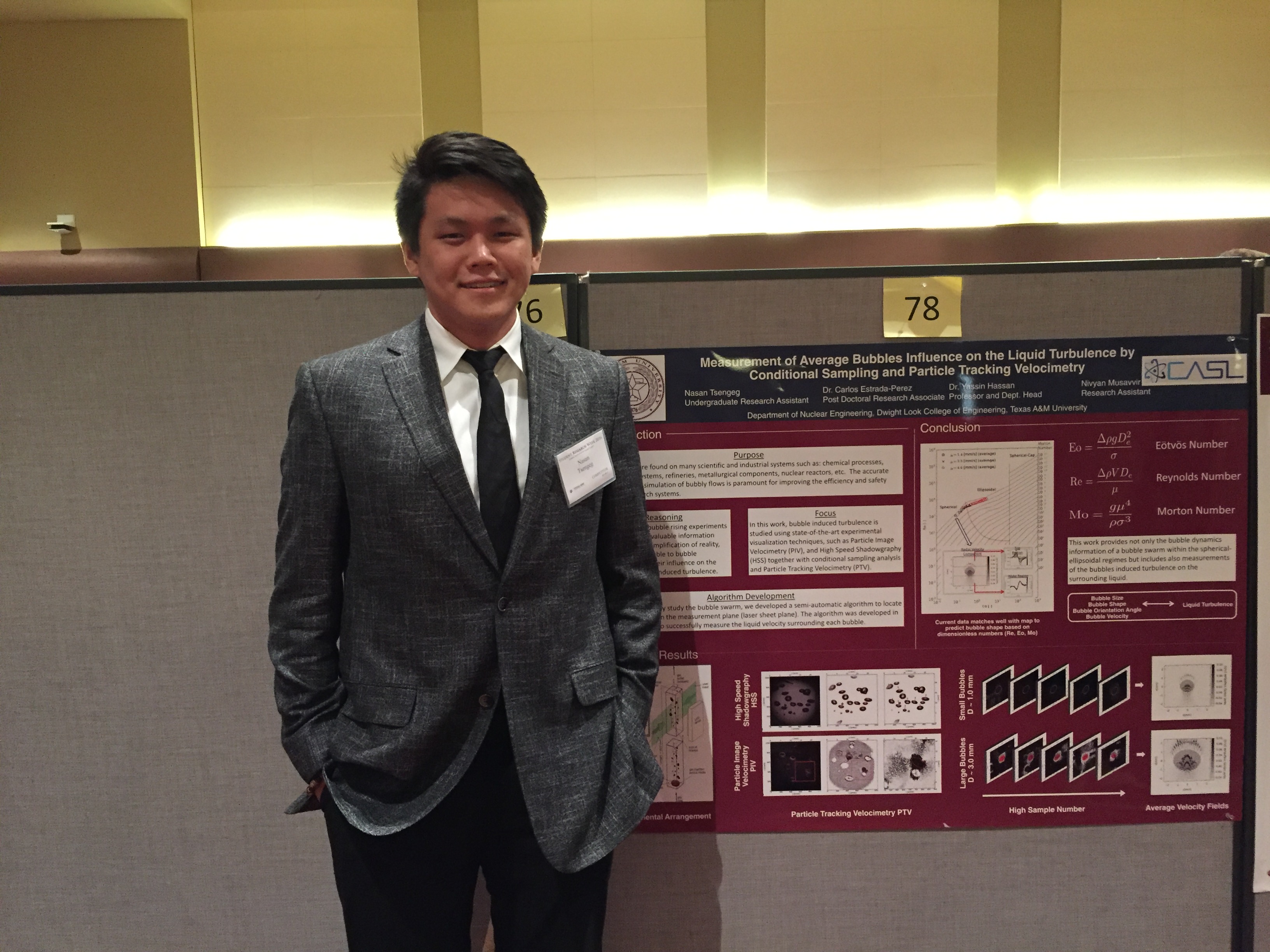
Nasan Tsengeg, sophomore in the Department of Electrical and Computer Engineering at Texas A&M University, placed first for undergraduate research in the engineering category of Texas A&M’s student research week.
Tsengeg contributes to ongoing research being conducted by Dr. Carlos Estrada-Pérez and Dr. Yassin A. Hassan, within the Department of Nuclear Engineering’s thermal hydraulics laboratory. Estrada’s research project focuses on experimental investigations of two-phase flow systems typical in water cooled nuclear reactors. The gathered experimental information provides new insights to help on the design of safer and more efficient reactors.
“The end goal is to have an algorithm that will gather new and relevant experimental information to improve and modify numerical algorithms that are used in the design and safety analysis of nuclear reactor systems,” Tsengeg said.
According to Tsengeg, single bubble experiments have been performed since the time of da Vinci to study how bubbles affect water turbulence, allowing the scientists of the day to develop fundamental equations. However, previous experiments were performed in single bubble rising conditions. In real life there are hundreds of thousands of bubbles the researchers are dealing with and those equations may be limited to accurately predict reality.
The project was funded by the Consortium for Advanced Simulation of Light Water Reactors (CASL) and was a collaboration between Tsengeg, fellow student researcher Nivyan Musavvir, Estrada-Pérez and Hassan.
Tsengeg became involved with the thermal hydraulics research group after meeting key members and students while visiting Texas A&M as a high school student. Once accepted to Texas A&M, he began working for the lab as a student researcher and was able to submit his work as a part of student research week.
“I've always been passionate about nuclear engineering and owe a lot to Tim Crook and the nuclear engineering faculty I met while in high school for getting me to this point,” Tsengeg said. “After doing student research week the main thing I got out of this was that any undergraduate can get involved in research as long as you are willing to work.”
![Tsengeg_[2]](../_news-images/img_1237.jpg)
Tsengeg and Musavvir mapped the bubble flow by using a high speed camera to capture water-air interaction at 10,000 frames per second. Then, by using high speed shadowgraphy (HSS) and particle image velocimetry (PIV), cross-correlated individual bubbles characteristics with the surrounding liquid velocity field, allowing researchers to understand how the bubbles may affect different important parameters such as the liquid turbulence and heat transfer. Tsengeg feels the work he collaborated on spoke to the purpose of programs like the research week.
“The keynote speaker’s main emphasis was that research is only brilliant research if it is able to help mankind,” Tsengeg said. "I think the project pinpointed that perfectly because in essence we are gathering more understanding to help prevent any future nuclear reactor incidents by making safer cooling processes.”
Bubbly flow also exists in refrigeration, chemical processes and any process that involves momentum and heat transfer process at multiple scales, so Tsengeg believes that with a few modifications this research has the potential to be interdisciplinary. Tsengeg, is also passionate about renewable energies, nuclear among others, and will continue his education in the hopes of becoming a venture capitalist to sponsor renewable energy research.
“I've really gotten to appreciate the opportunities that Drs. Hassan, Estrada, Lee, and Vaghetto have given me in terms of mentorship and research. Without all these great people I wouldn't have been given the opportunity to do this.”